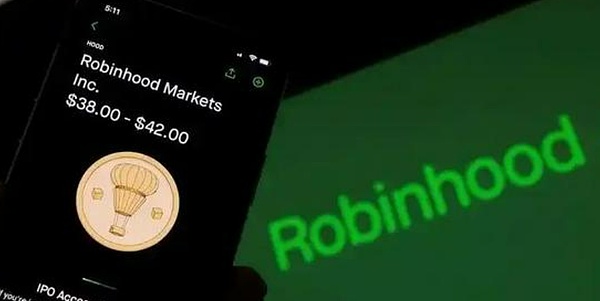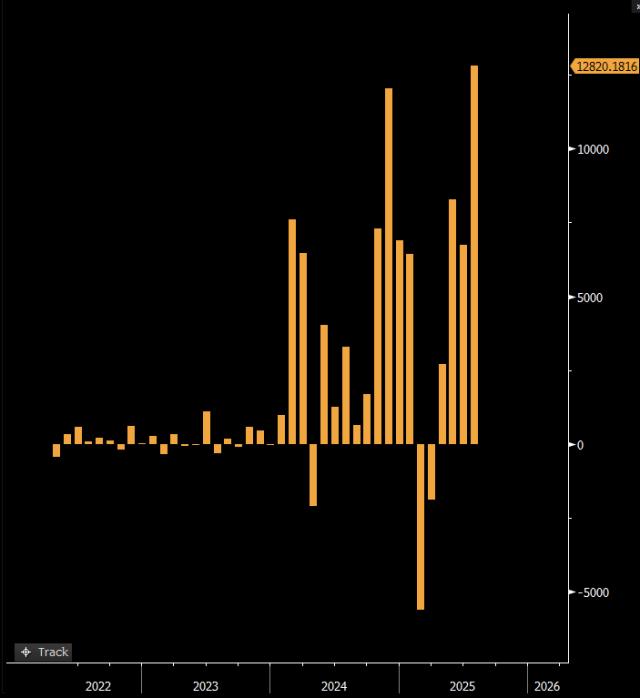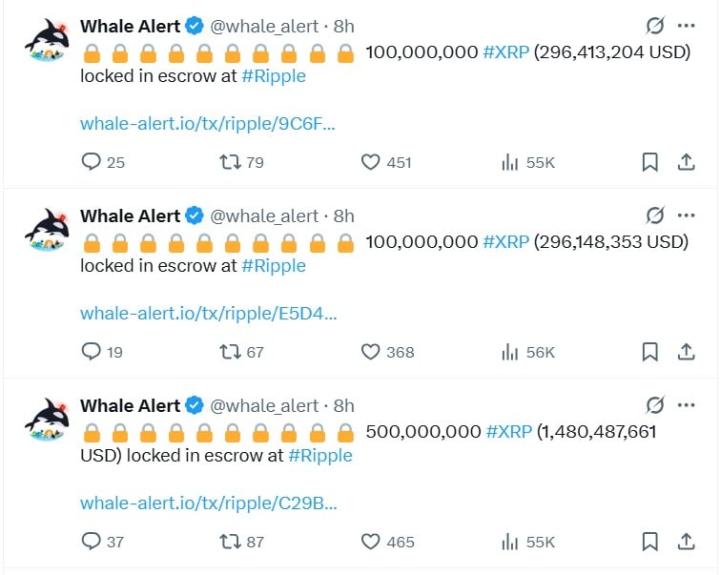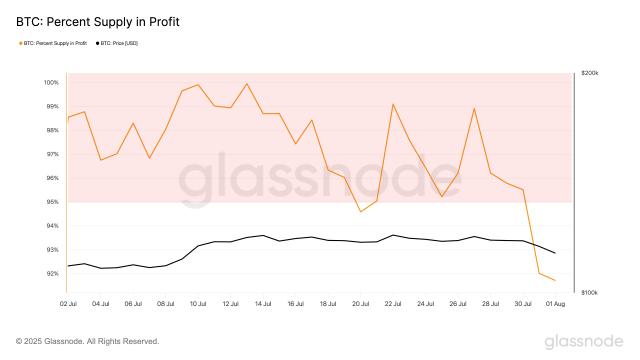Author: Zhang Feng
On July 1, 2025, the online brokerage Robinhood announced with great fanfare in Cannes, France, that it is officially launching tokenized stock trading services for EU users. This service covers over 200 US stocks and ETFs, including equity tokens for tech giants like OpenAI and space exploration company SpaceX. Users can invest in these previously inaccessible tech star companies' stocks with as little as 1 euro, with OpenAI tokens priced as low as 0.5 dollars.
However, OpenAI urgently issued a statement: "These 'OpenAI tokens' are not OpenAI equity. We have not collaborated with Robinhood, have not been involved, and do not endorse it". A fierce battle over the boundaries of financial innovation, regulatory compliance, and corporate control has thus begun.

I. Why is Robinhood betting on equity tokenization?
Robinhood's move is far from a simple product expansion, but a key step in transforming into a blockchain financial super app. Looking at its strategic layout, tokenized stocks carry three-fold ambitions:
Breaking Traditional Investment Barriers: Through fragmented tokens, lowering the investment threshold for top tech companies like OpenAI to a range accessible to ordinary retail investors. Private equity, traditionally limited to qualified investors in the primary market, can now be held by European users with just a few euros.
Reconstructing Global Liquidity System: Tokenized stocks support 24/7 trading, completely breaking the time constraints of traditional stock markets. More importantly, it creates an instant secondary market for unlisted companies like SpaceX, solving the long-standing exit difficulties of private equity.
Seizing the Trillion-Dollar RWA (Real-World Assets) Market Opportunity: According to Morgan Stanley's prediction, the global RWA market size will exceed 10 trillion dollars by 2025. Robinhood enters this market with a retail-friendly strategy, differentiating itself from traditional institutions like BlackRock. Its stock price surged 13% on the day of service launch, reaching a historic high, with the market expressing its approval of the strategic direction through real money.
In terms of technical architecture, Robinhood chose Arbitrum, an Ethereum Layer-2 network, as its initial platform, appreciating its transaction cost of only 1/100 of the Ethereum mainnet (with gas fees below 0.1 dollars). However, this is just a transitional solution. The company has started developing its own Layer-2 blockchain "Robinhood Chain", optimized based on the Arbitrum Orbit technology stack, designed specifically for RWA, with the goal of cross-chain interoperability and self-custody systems.
II. The Essence of "Equity Tokens" is Equity Rights under SPV Mapping
How does Robinhood achieve tokenization of unlisted company equity? The core lies in the precise legal and financial engineering architecture of a Special Purpose Vehicle (SPV):
Indirect Shareholding Design: Robinhood does not directly hold OpenAI equity, but invests in an SPV that holds OpenAI shares, obtaining indirect economic exposure.
Tokenization of Equity Rights: Package and divide the SPV's rights into tokens based on the Arbitrum blockchain. Each token represents a tracking right to the underlying asset value changes.
Limited Rights Allocation: Token holders receive economic rights (such as dividend distribution) but do not enjoy voting rights or formal shareholder status. Robinhood clearly states in its terms: "You are not purchasing actual stocks, but a contract recorded on the blockchain".
This design essentially creates an equity derivative: token prices are anchored to target company valuation changes, but legally, users only hold debt rights to the Robinhood SPV. Technically, this architecture relies on smart contracts to automatically execute price mapping and dividend distribution. However, on-chain data shows that its contract design is a closed system - each transfer requires KYC/AML review, still maintaining centralized control, in stark contrast to the blockchain's open ideals.
III. Why Did OpenAI Immediately Deny?
OpenAI's counterattack was swift and thorough:
In the official statement, it emphasized "no collaboration, no involvement, no endorsement" three times.
Clearly stating that "any OpenAI equity transfer requires approval", implying that the issuance was completely unauthorized.
Musk even sharply commented on social media: "Your equity is fake", adding fuel to the controversy.
Deeper industry contradictions were thus exposed:
Corporate Control Challenge: OpenAI's closed-source strategy and tightly controlled equity structure are the cornerstone of its business. The potential equity dispersion and information transparency brought by tokenization directly threaten its core competitive advantage. Robot company Figure AI has also issued lawyer's letters for similar actions, emphasizing that "all share transactions must be authorized by the board".
Pricing Rights Dispute: Private companies worry that low-price trading in the secondary market could impact their financing valuation. If Robinhood users trade OpenAI tokens at a discount, it could affect the company's subsequent financing pricing capabilities.
IV. Compliance Dilemma of Tokenized Securities
This incident exposes multiple legal risks faced by RWA tokenization:
Securities Definition Ambiguity: The US SEC has not clearly defined whether tokenized stocks are securities, while the EU, though incorporating security tokens into licensing through the MiCA framework, still has regulatory gaps for unlisted company equity tokens. Robinhood's choice to launch in the EU is a strategic probe to avoid US regulatory uncertainty.
Shareholder Agreement Conflicts: Private company shareholder agreements typically include equity transfer restriction clauses. Dragonfly partner Rob Hadick warns: "Companies can cancel stock sales that violate agreements, causing token holders' assets to instantly evaporate". This means OpenAI could theoretically retroactively invalidate the shares held by the Robinhood SPV, causing token values to vanish instantly.
Cross-Border Regulatory Arbitrage Risks: The service is limited to European users, but the blockchain's global openness means actual users could be worldwide, triggering jurisdictional conflicts. Tax issues are even more complex - capital gains tax and withholding tax have different applicable rules in different countries.
These controversies reveal the core contradiction of RWA: Blockchain technology pursues openness and transparency, while traditional finance and corporate governance require privacy and control. The gap between them remains unbridged, and the OpenAI incident has brought this into full view.
V. Continuing Transformation Amid Controversy
Despite the ongoing controversy, Robinhood's tokenization strategy continues to advance, potentially developing in the following directions:
Technical Infrastructure Upgrade: Plans to migrate its RWA products to its self-developed Robinhood Chain between late 2025 and early 2026. This chain is designed for compliance, with built-in KYC/AML modules, aiming to achieve cross-chain asset interoperability (connecting Ethereum, Solana, etc.) and non-custodial wallet support.
Product Form Iteration: Shifting from "equity tokens" to "revenue rights tokens". After the OpenAI incident, tokens with pure economic rights (only dividends, no governance) might become a compromise solution. NVIDIA's on-chain patent pool licensing model provides a reference - precisely controlling circulation range through smart contracts.
Regulatory Sandbox Cooperation: Learning from Singapore's MAS and Ant Chain's Project Guardian, testing compliance solutions in a controlled environment. Reaching pre-authorization agreements with target companies is also imperative to avoid the "act first, report later" mistake.
More profound changes may occur in the regulatory realm. This controversy might prompt the EU to refine tokenization rules for unlisted companies under the MiCA framework, requiring platforms to clearly disclose the indirect holding attributes of tokens and establish authorization verification mechanisms with target companies.
VI. Impact on the RWA Industry Ecosystem
Regardless of the outcome, Robinhood's experiment has brought an irreversible impact to the RWA field:
Negative Warning Effect: OpenAI's strong denial and the Lithuanian central bank's investigation have drawn a red line for the industry. Any tokenization project without authorization from the target company will face enormous legal risks and reputation backlash. In the short term, institutions may become cautious about tokenizing private enterprise equity.
Positive Acceleration Effect: Institutions like BlackRock and Franklin Templeton have accelerated their RWA layout. Robinhood's retail-first strategy validates the huge market demand for fragmented investment. Innovative compliance solutions will usher in an explosion - such as the Jarsy platform's "on-chain mapping + off-chain physical" model (first purchasing equity rights and then 1:1 tokenization) may become the new standard.
Redefinition of Financial Democratization: Supporters praise it as a breakthrough against "elite capital monopoly"; critics denounce it as "fake equity rights, true gimmick". The true balance point may lie in the middle path: ensuring transparency through regulation, achieving accessibility through technology, while respecting companies' reasonable demands for core control rights.
VII. Moving Forward in Rebalancing Innovation and Compliance
Robinhood's OpenAI tokenization experiment is like a double-edged sword. On one hand, it reveals the access barriers and inefficiencies of traditional financial markets with technological courage, opening new possibilities for global, fragmented investment through blockchain; on the other hand, its disregard for legal boundaries and OpenAI's fierce rebound expose the immaturity of RWA in business ethics and regulatory compliance.
The ultimate outcome of this game will not be a complete victory for either side. A more likely development is the emergence of a new paradigm: under an authorization framework, separating and tokenizing revenue rights and governance rights, protecting the company's need for sensitive control rights while opening economic benefits for public sharing.







